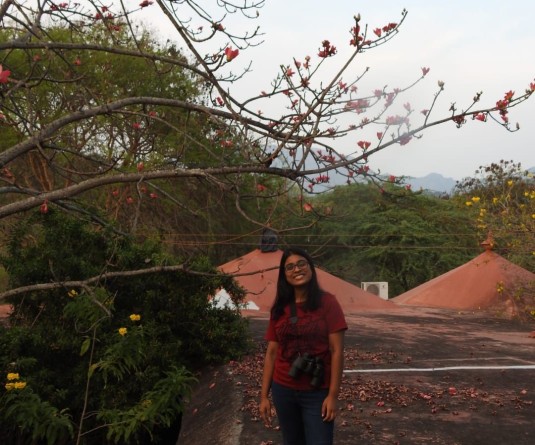
Dr M Gairiangmei, Professor
Department of Political Science,
St Joseph University, Chümoukedima
This article is an attempt to analyze the tourism development in Northeast India. Today, tourism is one of the most important and fastest-growing industries in the world. Tourism sector contributes to the growth of economies in several countries. It is a source of employment and revenue. It creates a lot of job opportunities and it generates a lot of revenue that led to the growth of economy in the country. In addition to that, it allows people of different countries move and mingles with other countries. Through Tourism, people from different countries can get closer and know each other socially, culturally and religiously. It paves the way to understand and explore the rich cultural heritage and ancient history of unknown places.
Problems
The North East Region comprises of eight states of Arunachal Pradesh, Assam, Manipur, Mizoram, Nagaland, Sikkim and Tripura. All these states are surrounded and shared international boundary with China (1395 k.m), Bhutan (455 k.m), Myanmar (1640 k.m), Bangladesh (1596 k.m) and Nepal (97 k.m). On the other hand, this Northeast India is poorly connected with the mainland India through a very narrow strip of land: Silighuri Corridor, West Bengal with a narrow width of about 22 kilometres. These states cover an area of 2,63,179 sq. k.m. approximately eight per cent of the country’s total geographical areas. Many people are not well aware of the North East Region. The North East India has been long remained in geographical isolation from the rest of the country. The North East India is a mountainous region, except the state of Assam, which has plains as a major part of its area so this makes it difficult for the government schemes to be implemented in the area. It is a landlocked region and it has a difficult terrain that renders expressways and wider roads infeasible. In addition to that, tourism could not flourish and it has suffered a lot due to insurgency, political and social instability in the region.
Scope of tourism
The 10th International Tourism Mart (ITM) for the North East Region from 17th to 19th November, 2022 in Aizawl, Mizoram was organized by the Ministry of Tourism, Government of India. The objective of ITM 2022 was to highlight tourism potential of the North East Region in domestic and international markets. On the second day of the occasion, it highlighted that the eight states of North East Region are blessed with scenic natural beauty, rich biodiversity, rare wildlife, historical sites, distinct cultural and ethnic heritage and warm and welcoming people. The region offers unforgettable Wildlife Tourism, Tea & Golf Tourism, River Tourism, Religious & Spiritual Tourism, Heritage Tourism, Cultural & Culinary Tourism, Adventure Tourism, Agro. & Rural Tourism and Offbeat Destinations. North East India is home to many wildlife sanctuaries like Kaziranga National Park famous for the one-horned rhinoceros. The mighty Brahmaputra flows through the length of Assam where tourists can enjoy memorable river cruises and the flowing rivers of Arunachal Pradesh which feed the Brahmaputra offering incredible white water rafting experiences. The region is endowed with diverse tourist attractions. Each State has its own distinct and unique features and has great potential for accelerating tourism growth. During the Prime Minister’s 65th Plenary of the NEC (on 27.05.2016) day speech, PM Narendra Modi mentioned, “All the states of the North East region are blessed with natural scenic beauty, distinct historical cultural and ethnic heritage. All this offers tremendous scope for tourism in the region. There is also a great scope for mountaineering, trekking and adventure tourism in the region. If developed and promoted well, this can emerge as the biggest employer in the region. It can also add to the growth and income of the region.” The picturesque landscape, the ethnic group and geographical and ecological diversity make this region quite unique and different from the mainland India. This region can be a hub for tourist activity and it can be harnessed as a source of eco-tourism and rural tourism. And it is ideal for both passive and adventure forms of ecotourism. This region has been long remained in geographical isolation from the rest of the country. Today, it has changed, and improved the communications and well connected to the rest of India.
Act East Policy
The North East Region did not receive much attention from both the central and state governments and it hampered the development of the region which remained backward without proper infrastructure developments. The Northeast India is geographically contiguous to Myanmar, which is a part of South-East Asia. Today, the India’s Act East Policy focuses and closely connected with its long-term vision of developing the North East Region which is considered as a gateway to Southeast Asia. The government of India has shown a strong commitment to bilateral and regional levels including steady efforts to develop and strengthen connectivity of Northeast Region with the ASEAN region through trade, culture, tourism, people-to-people contacts and physical infrastructures. Since Japan’s interests in the Northeast Region are deeply rooted in history. In 2016, Japan reaffirmed its commitment to enhancing connectivity and expressed satisfaction at the progress of projects in the North East Region. In 2017, Indo-Japanese cooperation received a big push with the two prime ministers signing an agreement to establish the India-Japan Act East Forum which is conceived of as a platform for bilateral cooperation. The Forum is to identify projects for the economic advancement of the region, with focus on connectivity projects, disaster management and environment and people-to-people contacts through tourism and culture. India’s Act East policy has a strong synergy with Japan’s Free and Open Indo-Pacific and South Korea’s New Southern Policy. It not only expanded its geographical reach to include Vietnam, and Australia, but has also assumed significant strategic and political dimensions. And it has already undertaken development projects in countries like Bangladesh, Myanmar, Kenya and Sri Lanka. In recent years, India’s economic relations with the countries of ASEAN have witnessed dramatic growth.
Employment opportunity
No doubt, the North East Region is an ideal tourist destination due to amazing picturesque landscape, the multi-ethnic group, geographical and ecological diversity make this region quite unique and different from the rest of the country that can easily make it a tourist-spot. The unemployment rate in North East States is higher than the national average. High unemployment rate has been a contributing factor to unrest and social ills in the society. There are usually high rates of unemployment in areas where crimes are very high. It is believed that when the rate of unemployment is declining the rate of criminal activities is also falling.
In this bleak picture, tourism sector has the great potential for employment opportunities and generating income in the region because North East Region offers almost everything that attracts for an ideal tourist.
Tourism’s role in job creation is often undervalued. This is despite the fact that tourism generates 10 per cent of world jobs and is included in Sustainable Development Goal for its potential to create decent work. The tourism sector employs more women and young people than most other sectors. Women play a leading role in tourism entrepreneurship. According to UNWTO/UN Women research, the global rate of women entrepreneurs in ‘hotels and restaurants’ (36%) is comparatively higher than in all sectors combined (22%). Tourism has the potential to create jobs opportunity for women and youth, generate income, and boost the local economy.
The more tourists visit the region, the more the higher demand for goods and services, leading to the growth of various sectors. In North Eastern Region, proper initiative of tourism infrastructure development has so far not been undertaken. Better road and air connectivity can help attract more tourists to the region. To boost tourism, effective marketing campaigns should be developed to promote tourism in the region. Provide better infrastructure and diversifying tourism offerings can attract more tourists, while sustainable tourism practices should be promoted to protect indigenous local culture and environment. And an integrated approach to promote tourism in this region is the need of the hour.





